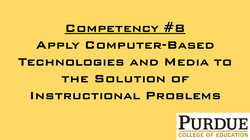
- Plans and designs effective learning environments and experiences supported by technology.
- Applies technology to facilitate a variety of effective assessment and evaluation strategies.
- Demonstrates understanding of social, ethical, legal, and human issues surrounding the use of technology and applies it in practice.
Artifacts: EDCI 569 High School Finance - Summer 2016
EDCI 513 Mechanix - Fall 2015
Narrative:
Both artifacts involved designing learning applications and assessments in the on-line space.
The Mechanix tool was developed by the Texas A&M Computer Science Sketch Recognition Lab (TAMU SRL) as a human-computer interface supporting vector and truss analysis that provides immediate constructive feedback to the student while providing student-level metrics for the instructor. My role was to vet the product from both the high school student and the high school instructor perspective to identify adjustments to be made relative to the needs of that market, and then deploy the tool in my high school engineering classroom. The E-learning product involved my building an on-line module training high school students on basic financial operations.
Both activities required my planning and designing in an on-line learning environment where students and instructors alike, were engaged in the learning experiences.
In the 'Finance for High School Grads' module I applied technology to facilitate a variety of effective assessment and evaluation strategies to include "...an on-line game...budget creation activity...support sites...submit artifacts via Google Drive folder...on-line test including constructive feedback for incorrect answers."
ADA compliance is garnering increased attention as on-line accessibility, equality, and other education environment issues move to the forefront of this preferred application. The 'Finance' course is built with instructor "flexibility...scaffolding...differentiated lessons...to allow the learner to take the time they need to prepare..." The product is also void of audio components which is more appealing to our audio-challenged learners. As on-line training grows in market share, increased attention is being levied on training environmental issues surrounding the use of technology and application in practice in the realm of:
- Social - Though most ID builds are for a targeted market, we must always be aware of the cultural and societal diversity of learners that may encounter our digital training. We should make efforts to construct tools, within reason and parameters of our task, that have a very wide, cross-cultural appeal and an ease of accessibility for all.
- Ethical - Plagiarism avoidance and accurate citing of sources is expected, seemingly against the tide of piracy in the video and audio markets. We must ensure that credit is always given where credit is due. Though 'educational use' is often granted a loose rein, we must be cognizant about taking advantage of that grace.
- Legal - Licensing software and approved use of digital artifacts must be adhered to and expected of others. As both digital producers and users, instructional designers must lead the charge regarding what is proper.
- Human - The culture and brains of our learners are changing, and it is up to IDers to drive the curricular changes. For example, the Finance module was built in two different venues. A blocked step process for those students preferring a traditional design, and a single-scroll page for those students more akin to social media.
Both Mechanix and the Finance module were planned and designed to contain effective learning environments and experiences supported by technology while optimizing the use of on-line tools to craft an environment that enhances the learner's on-line experience. Pursuing technological solutions to teaching/learning challenges is a byword of my educational existence. I actively search for on-line opportunities for both my precalculus and my engineering students to better support and extend their learning.
